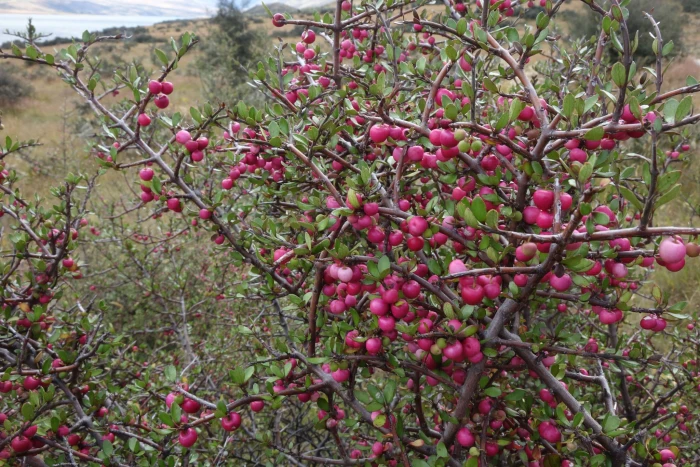Wineberry
(Aristotelia fruticosa)
Wineberry (Aristotelia fruticosa)
/
/

John Barkla
CC BY 4.0
Image By:
John Barkla
Recorded By:
Copyright:
CC BY 4.0
Copyright Notice:
Photo by: John Barkla | License Type: CC BY 4.0 | License URL: http://creativecommons.org/licenses/by/4.0/ | Rights Holder: John Barkla | Publisher: iNaturalist | Date Created: 2019-02-05T11:14:07-08:00 |



















































Estimated Native Range
Climate Requirements for Hamamatsu, Japan
| This Plant | Your Site | Plant Suitability for Your Location | ||
|---|---|---|---|---|
| • Precipitation | 22" - 193" | 80" | Aquatic | Aquatic |
| • High Temp. | 55°F - 74°F | 87°F | Your summers may be too hot for this plant. | Too hot |
| • Low Temp. | 14°F - 41°F | 35°F | Your winter temperatures are normal for this plant | Excellent |
This plant should grow well at your location with about N inches per year (Y minutes per month) of irrigation.
Summary
Aristotelia fruticosa, commonly known as Wineberry or Makomako, is an evergreen shrub or small tree native to the forest margins, stream sides, and clearings of New Zealand, often found in the alpine and subalpine zones. It typically grows to a height and width of 4-6 feet (1.2-1.8 meters), with a bushy habit and a rounded form. The leaves are dark green, and the plant produces small, pink to wine-red flowers in the spring, which are followed by purple-black berries that are attractive to birds.
Wineberry is valued for its ornamental foliage, showy flowers, and the wildlife it supports. It is used in cultivation for urban planting, border planting, and as a specimen in gardens. It thrives in moist, well-drained soils and can tolerate a range of light conditions from full sun to part shade. While it prefers high amounts of water, it can also adapt to less frequent watering once established. Wineberry can be susceptible to root rot if drainage is poor and may also be prone to aphids and scale insects.CC BY-SA 4.0
Wineberry is valued for its ornamental foliage, showy flowers, and the wildlife it supports. It is used in cultivation for urban planting, border planting, and as a specimen in gardens. It thrives in moist, well-drained soils and can tolerate a range of light conditions from full sun to part shade. While it prefers high amounts of water, it can also adapt to less frequent watering once established. Wineberry can be susceptible to root rot if drainage is poor and may also be prone to aphids and scale insects.CC BY-SA 4.0
Plant Description
- Plant Type: Shrub, Tree
- Height: 4-6 feet
- Width: 4-6 feet
- Growth Rate: Moderate
- Flower Color: Pink
- Flowering Season: Spring
- Leaf Retention: Evergreen
Growth Requirements
- Sun: Full Sun, Part Shade
- Water: High
- Drainage: Medium, Fast
Common Uses
Bird Garden, Border Plant, Butterfly Garden, Low Maintenance
Natural Habitat
Forest margins, stream sides, and clearings in New Zealand
Other Names
Common Names: Shrubby Wineberry
Scientific Names: Aristotelia fruticosa, Myrsine brachyclada, Aristotelia erecta, Friesia fruticosa
GBIF Accepted Name: Aristotelia fruticosa Hook.fil.